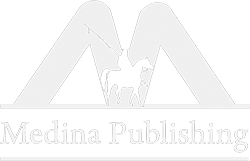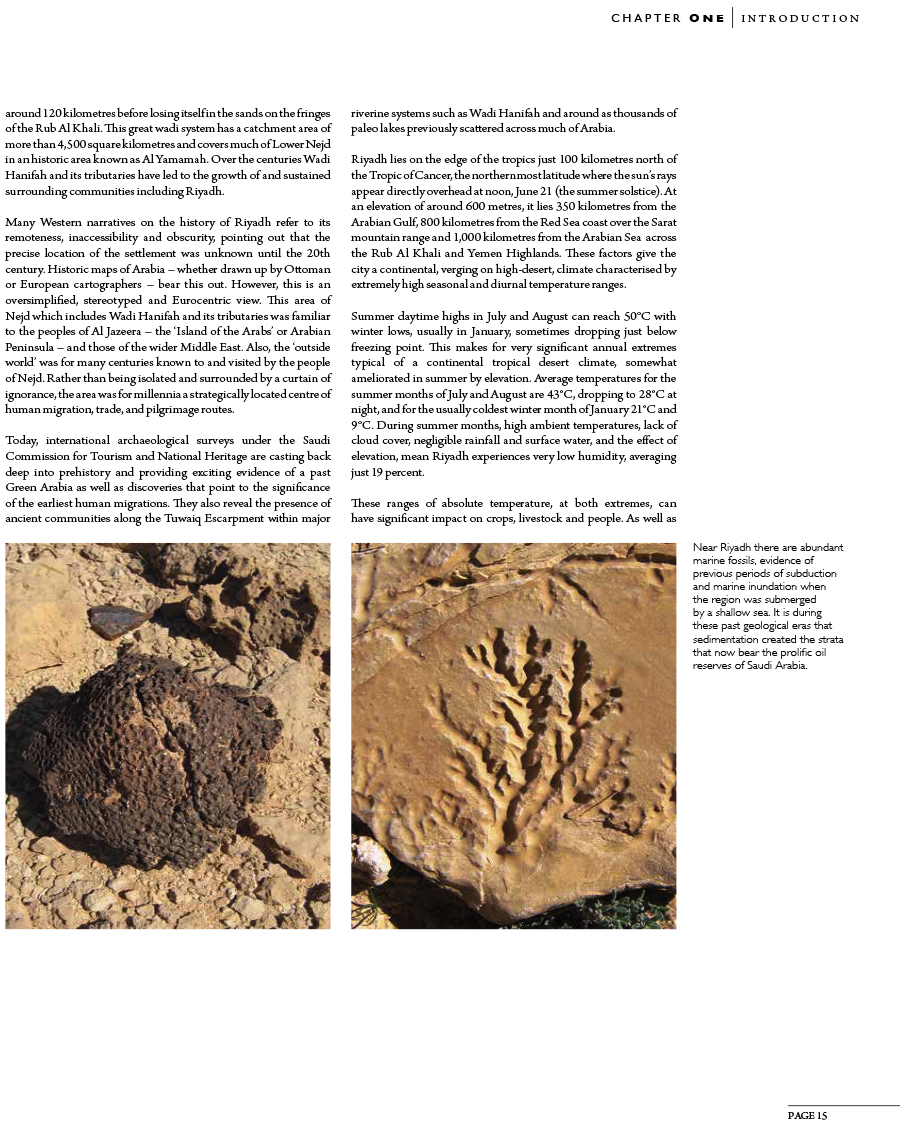Riyadh: Oasis of Heritage & Vision
Riyadh, Saudi Arabia’s capital and main financial hub, is on a desert plateau in the country’s center. Business district landmarks include the 302m-high Kingdom Centre, with a sky bridge connecting 2 towers, and 267m-high Al Faisaliah Centre, with a glass-globe summit. In the historical Deira district, Masmak Fort marks the site of the 1902 raid that gave the Al Sauds control of Riyadh. This book, written and researched by Peter Harrigan, is the first detailed and illustrated history of the capital up to the present time.
Available in English, Arabic, French and Spanish.
Dynamic Riyadh.
Riyadh in its modern form is almost entirely a metropolis of the 20th and 21st centuries; dynamic yet robust; resilient, complex and infinitely fascinating. It is the capital of a Kingdom which has by far the largest economy in the Middle East and North Africa (MENA) region and a gross domestic product making up 50 percent of that of all six Gulf Cooperation Council (GCC) states. The bold, visionary and transformational urban development that is taking place in Riyadh and the wholehearted adoption of modern technology by the capital’s youthful population are testimony that the city embraces the future. But along with its economic pre-eminence and political influence, this is still a city deeply conscious of its past and many of the major projects bear witness to this and point to a rich, eventful and intriguing history.

Preface.
Riyadh is strategically and centrally located in the Arabian Peninsula. It lies at the heart of ancient Yamamah and, through the ages, has been an attractive oasis situated on major migration, trade and pilgrimage routes. The region was an important base for the spread of Islam across the Peninsula and the Islamic world.
Its significance was consolidated by the historical pact forged between Imam Mohammed bin Saud and Sheikh Mohammed bin Abdulwahhab in 1744, which led to the founding of the First Saudi State, with Addiriyah as its capital. In 1824, Riyadh was chosen as the capital of the Second Saudi State by Imam Turki bin Abdullah and thus its trajectory of development began.
Introduction
Towards sunset the sky over Riyadh changes from bleached- pale hues into a golden light with tints of apricot, rose and red. The sun dips below the Tuwaiq Escarpment and from minarets the call for Maghreb prayer sweeps over the eastern industrial fringes into the city’s suburbs, across the historic heart and towards Wadi Hanifah. Soon the muezzin’s call echoes across the Saudi capital from more than 2,000 mosques. A century ago all the citizens in what was then a compact settlement encircled by mud walls heard the first call to prayer simultaneously from its dozen mosques. Such is the extent of the city today that during Ramadan the citizens on the city’s eastern edge break their fast a few minutes before their neighbours over 40 kilometres away in the suburbs of the western margins of the capital.
As dusk falls, the western sky gradually shifts through the blue spectrum from turquoise to indigo and finally, as darkness falls, turns a deep ultramarine as a sea of lights on streets, highways, buildings and neon signs punctuate the urban landscape. The illumination is clearly visible from space as the brightest of all patches on the Arabian Peninsula. Extending over an area of more than 1,500 square kilometres, Riyadh is the second largest city in the Middle East after Greater Cairo. The night-time lights and extent of this vast desert city also reveal a population approaching six million, by far the largest on the Arabian Peninsula and one of the great cities of the Arab world.

Take a closer look inside…
Pages 13, 14 & 15… click to view pdf extracts




